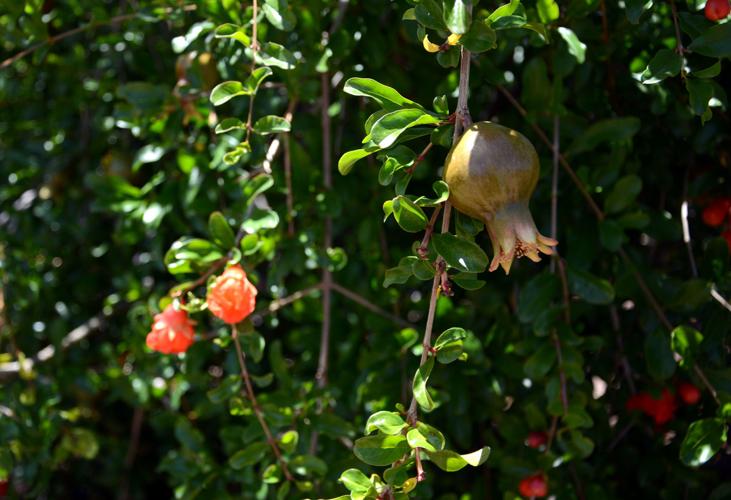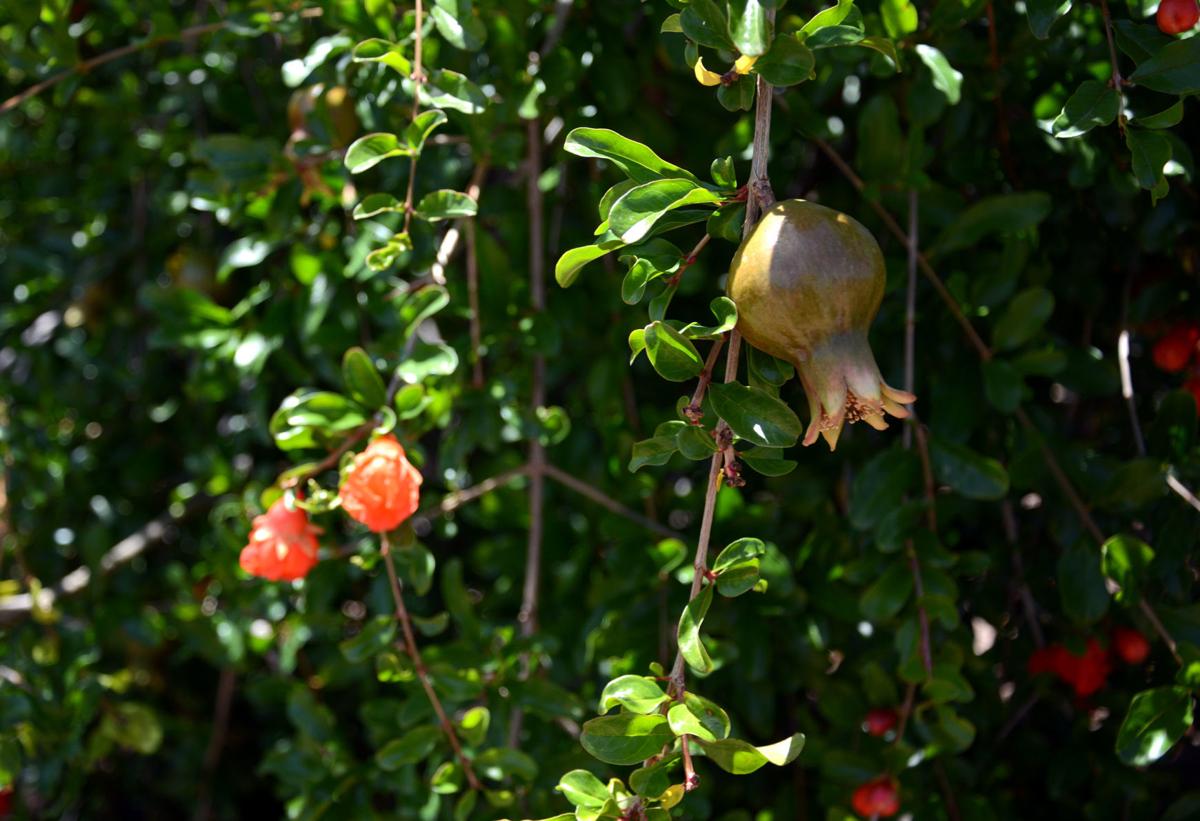The pomegranate, Punica granatum, has been in cultivation for as long as 8,000 years. It likely originated in the region of ancient Persia, and spread throughout the Middle Eastern and Mediterranean civilizations, from ancient Egypt to the Indus valley and Babylon. It was brought to Tucson by the Spanish in the early 1500s.
Fortunately for us, the plant produces its best fruit in arid climates. It’s a tasty, healthy fruit, and the plant is a great alternative to citrus due to its lower water use. It’s also a beautiful plant, with deep green oval leaves, striking coral-red flowers, and an attractive vertical form. It is winter deciduous, and its leaves turn a lovely bright yellow in the late fall. The stems are an attractive gray.
The plant grows as a multi-stem shrub, up to about 15 feet high, and can live for 300 years. Some shrubs have been known to reach 30 feet. It can also be pruned into a small tree shape. Plant it in full sun, in well-draining soil, and add some organic soil amendments and mulch. It’s reported as a slow grower, but I’ve found that a happy, regularly watered plant has at least a moderate growth rate. Plants are self-pollinating, but adding a second plant, especially a different cultivar, will likely increase your fruit set. They can be grown in large containers, as well.
The fruits require between 100 and 200 chill hours depending on the cultivar, so if you’re in a warmer area of town, choose one with lower chill hours. Early ripening cultivars ripen in August and September, while late-ripening fruit are ready in October and November. You can tell when fruit is ready to pick when it changes shape from spherical to slightly cuboid — the sides become less round and more angular.
Plants produce fruit usually after three to five years. The fruit takes several months to ripen so make sure you give the plant adequate and consistent water in this time period to avoid the fruit skin cracking open. This usually means two good waterings per week (depending on rain). Avoid overwatering, as it may cause mold to form. If you notice any cracked fruit, pick it immediately.

The unique pomegranate fruit is delicious and healthy. The inner flesh surrounding the seeds is clear and can be red, pink or yellowish in color. The flesh-covered seeds are called arils.
The juice, pulp, and seed of the pomegranate fruit is edible. The flesh-covered seeds are called arils, and may be a deep pink-red, or a very light pink, again depending on the cultivar and also on temperatures. When picked during warm weather, the pulp will be lighter, and will get more deep red as temperatures cool. The lighter pulp has a very delicate flavor. The fruit is very long-lasting when kept at 32 to 40 F for up to seven months. The arils are a great source of healthy antioxidants and flavonoids.
Many different cultivars do well in our area. I highly recommend visiting Mission Garden to learn more about cultivars, pomegranate care, and the plant’s long history in the Tucson area.






